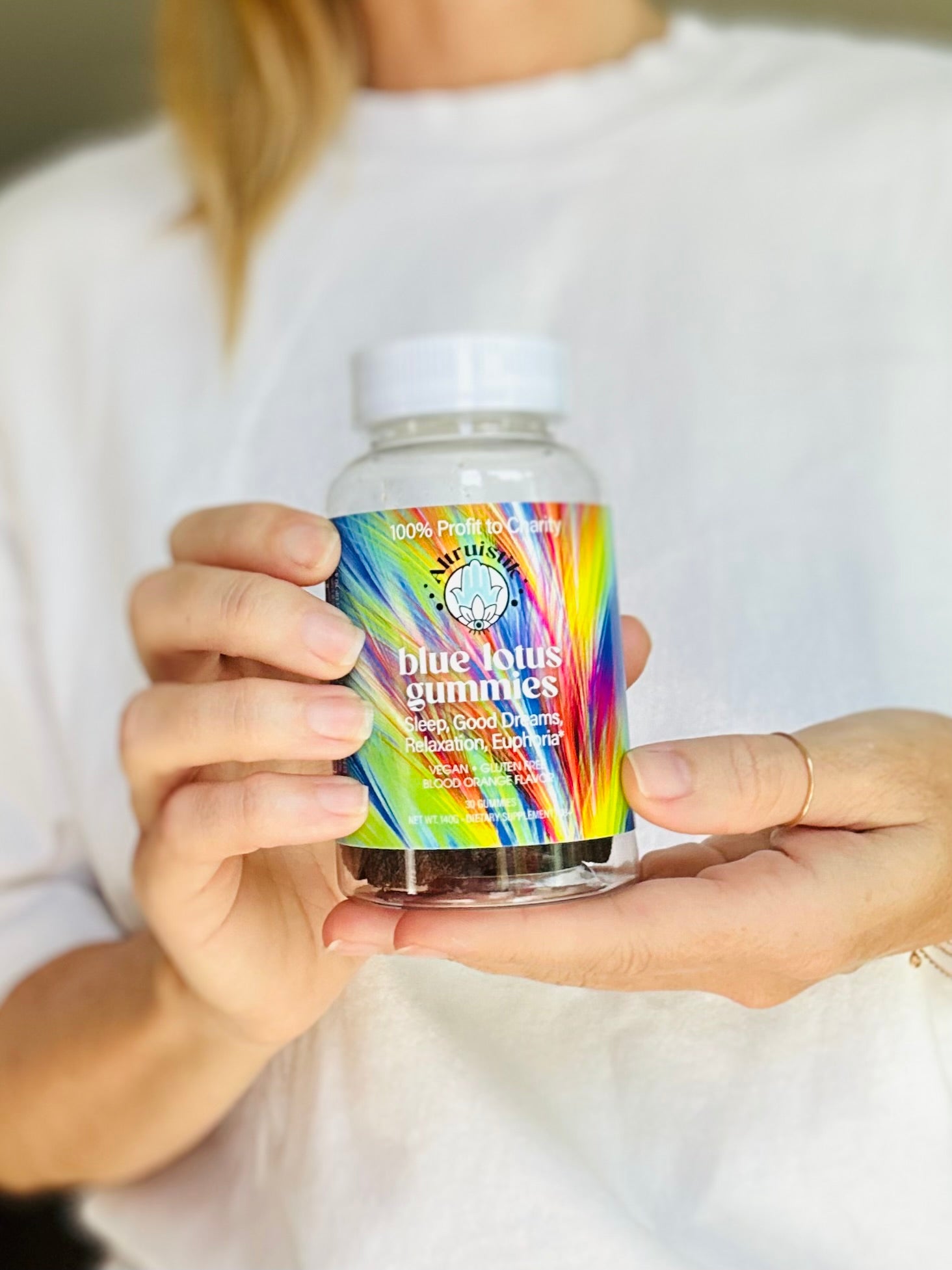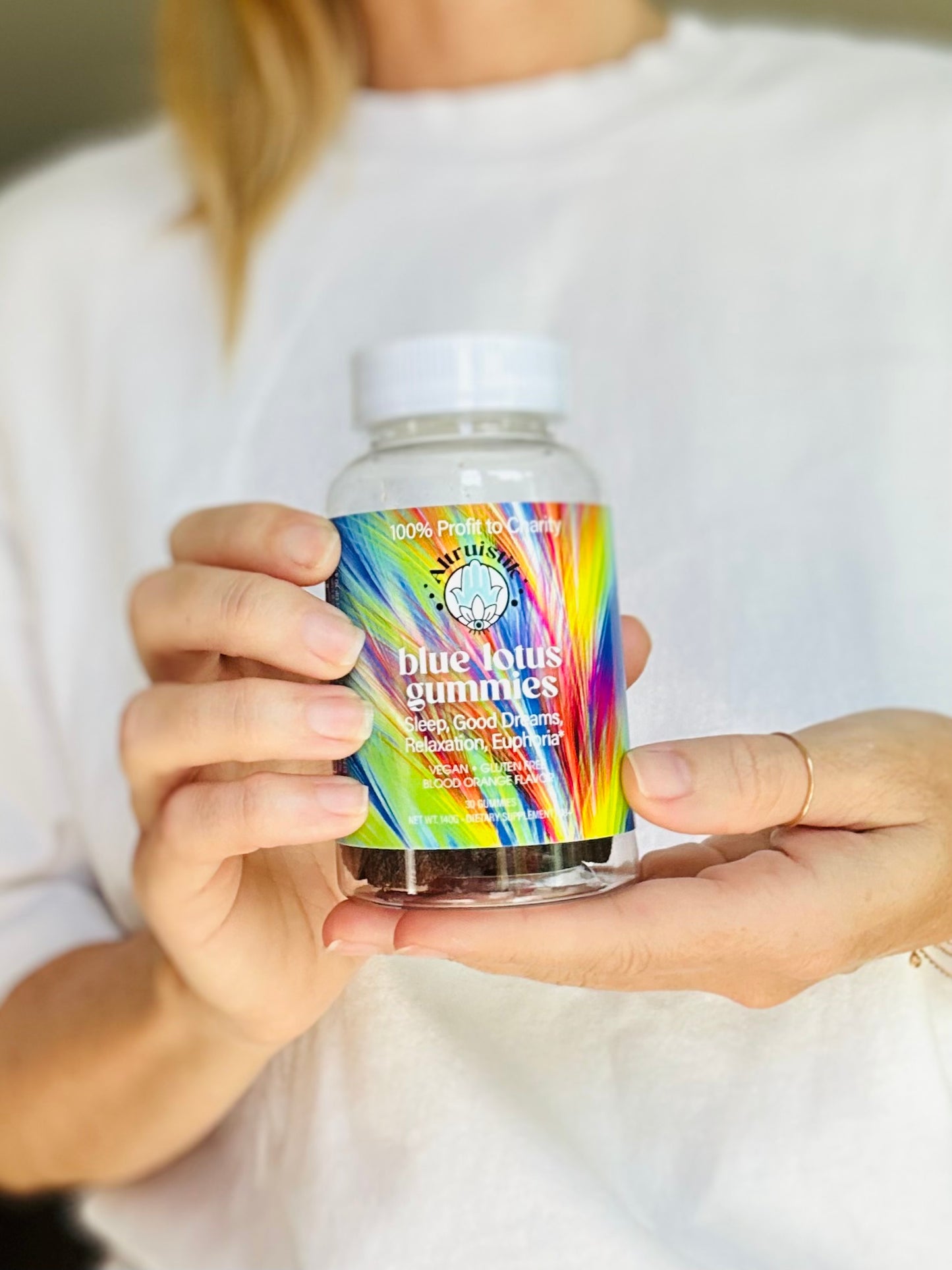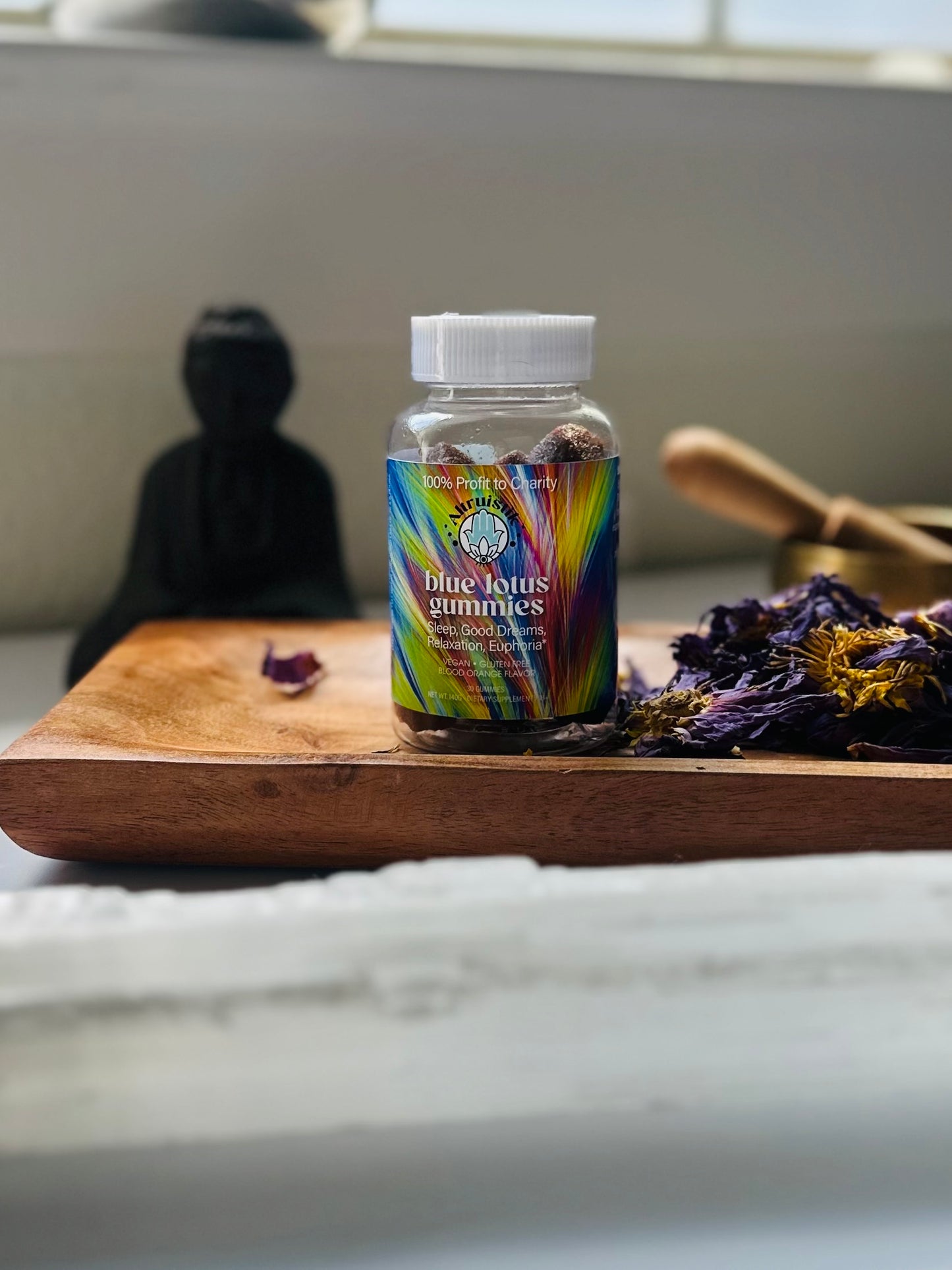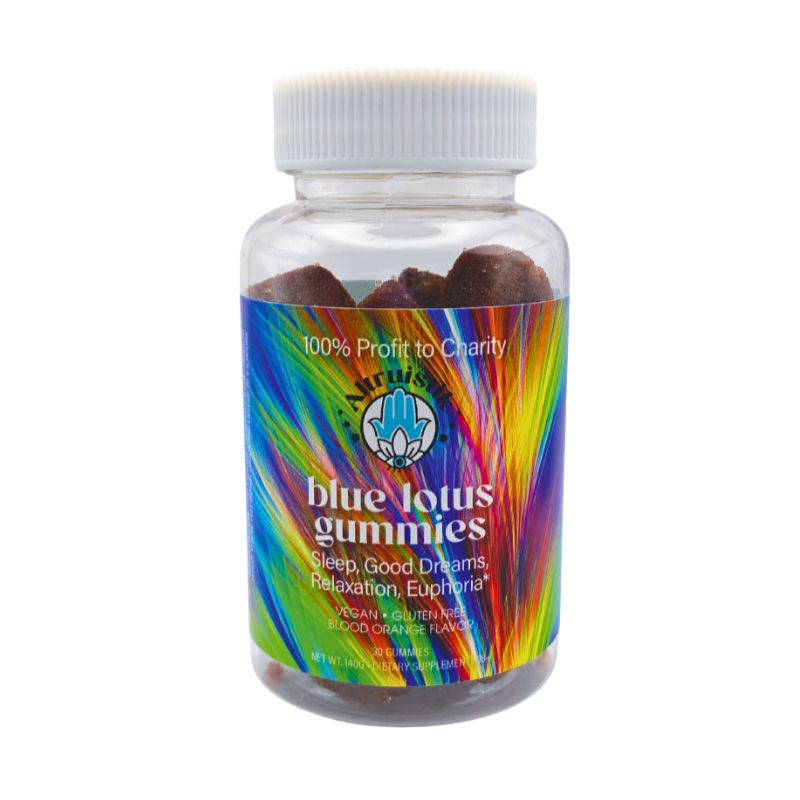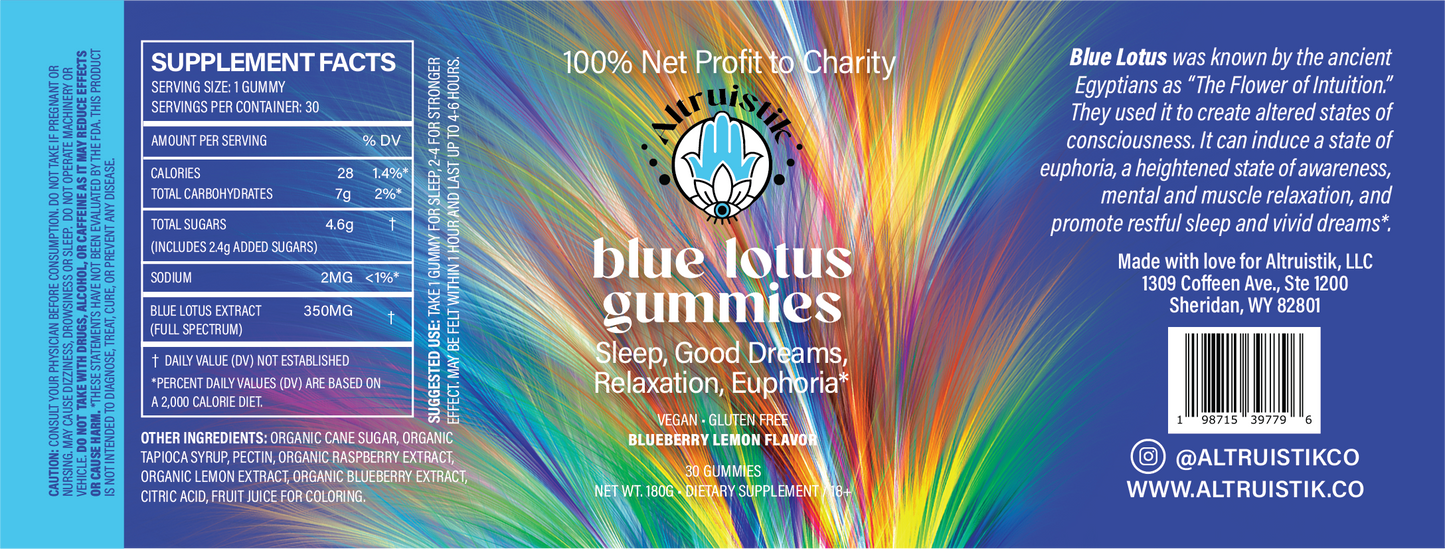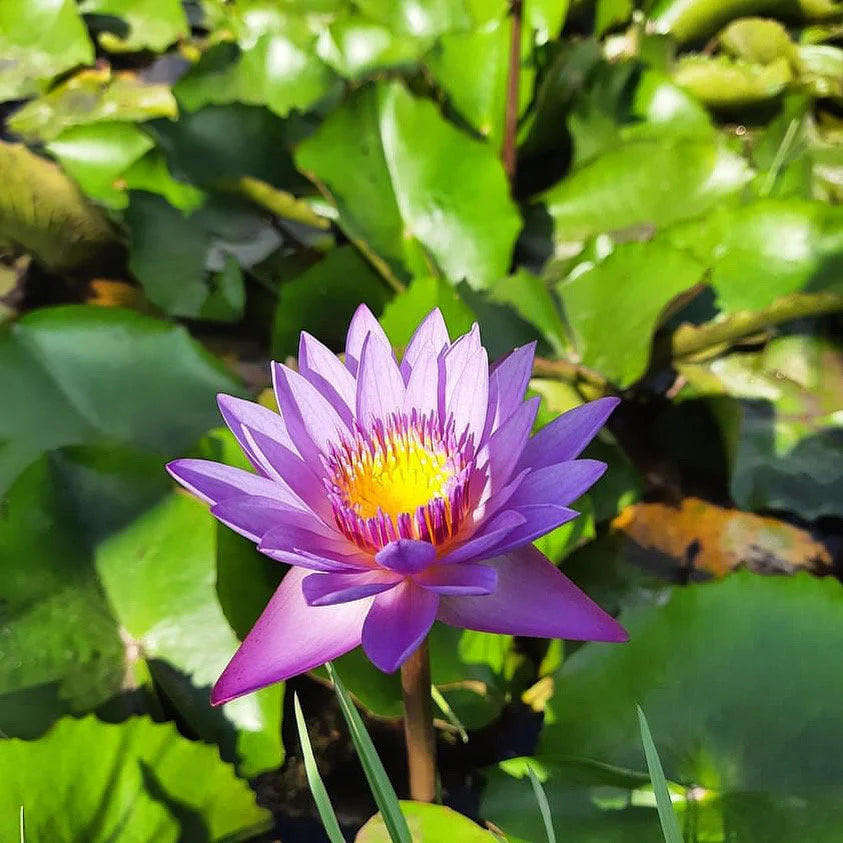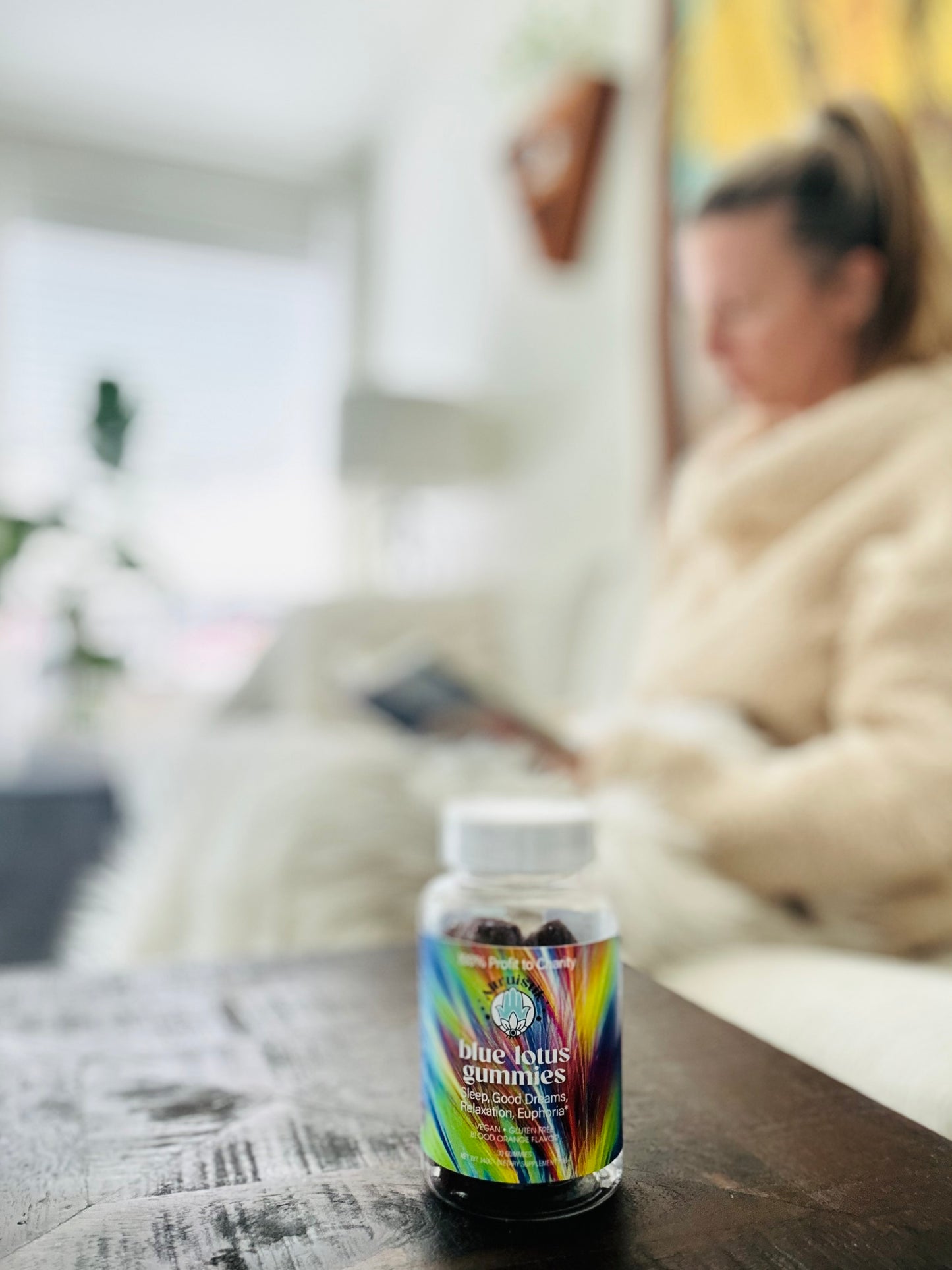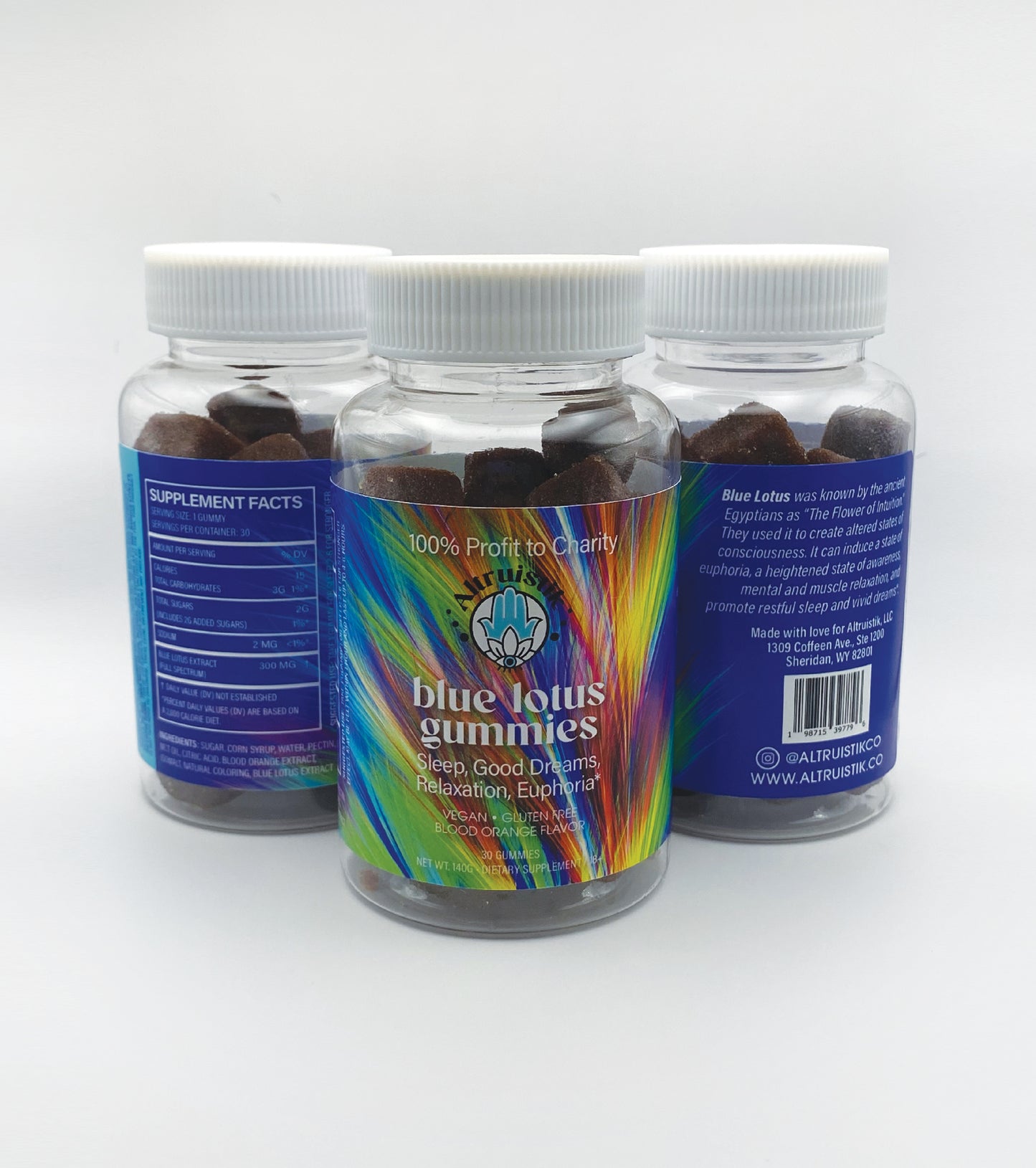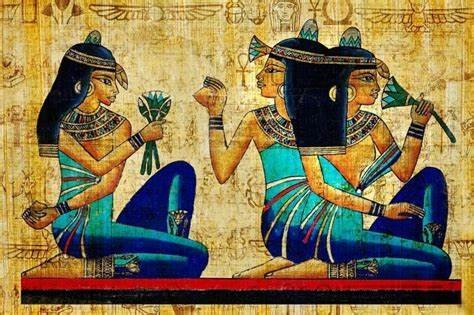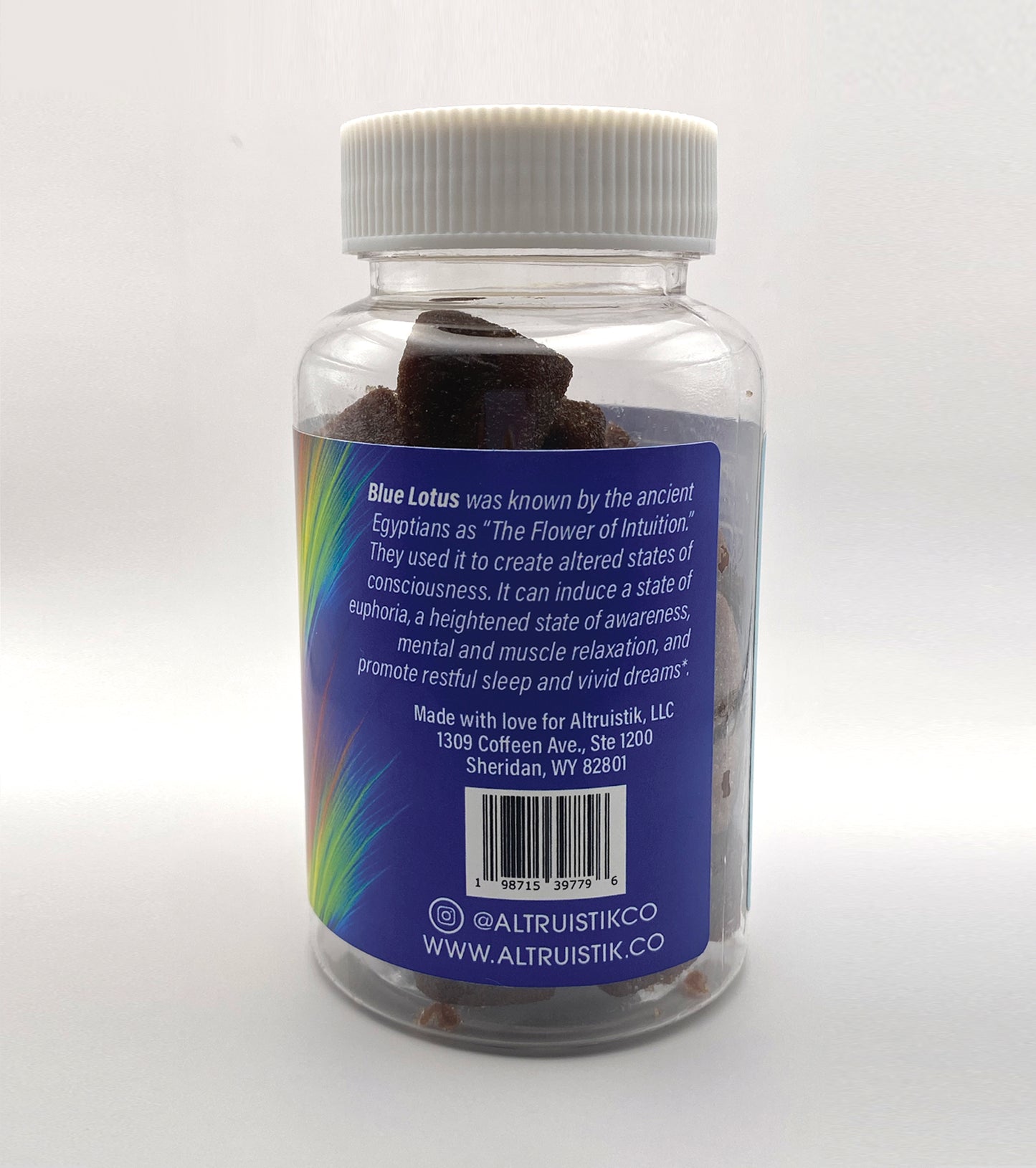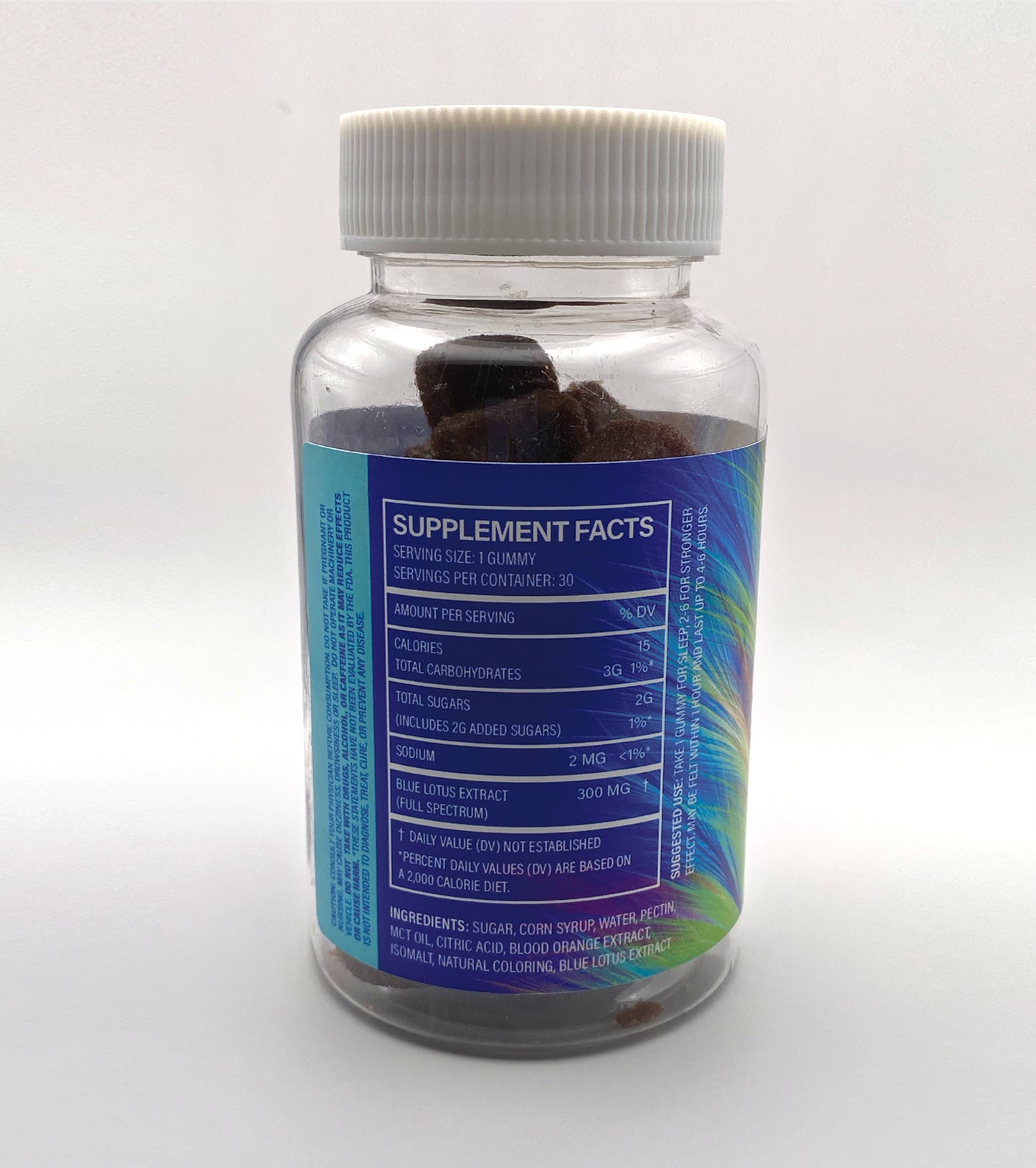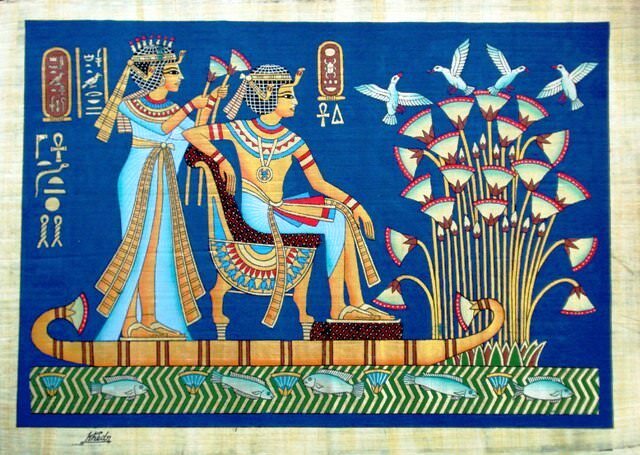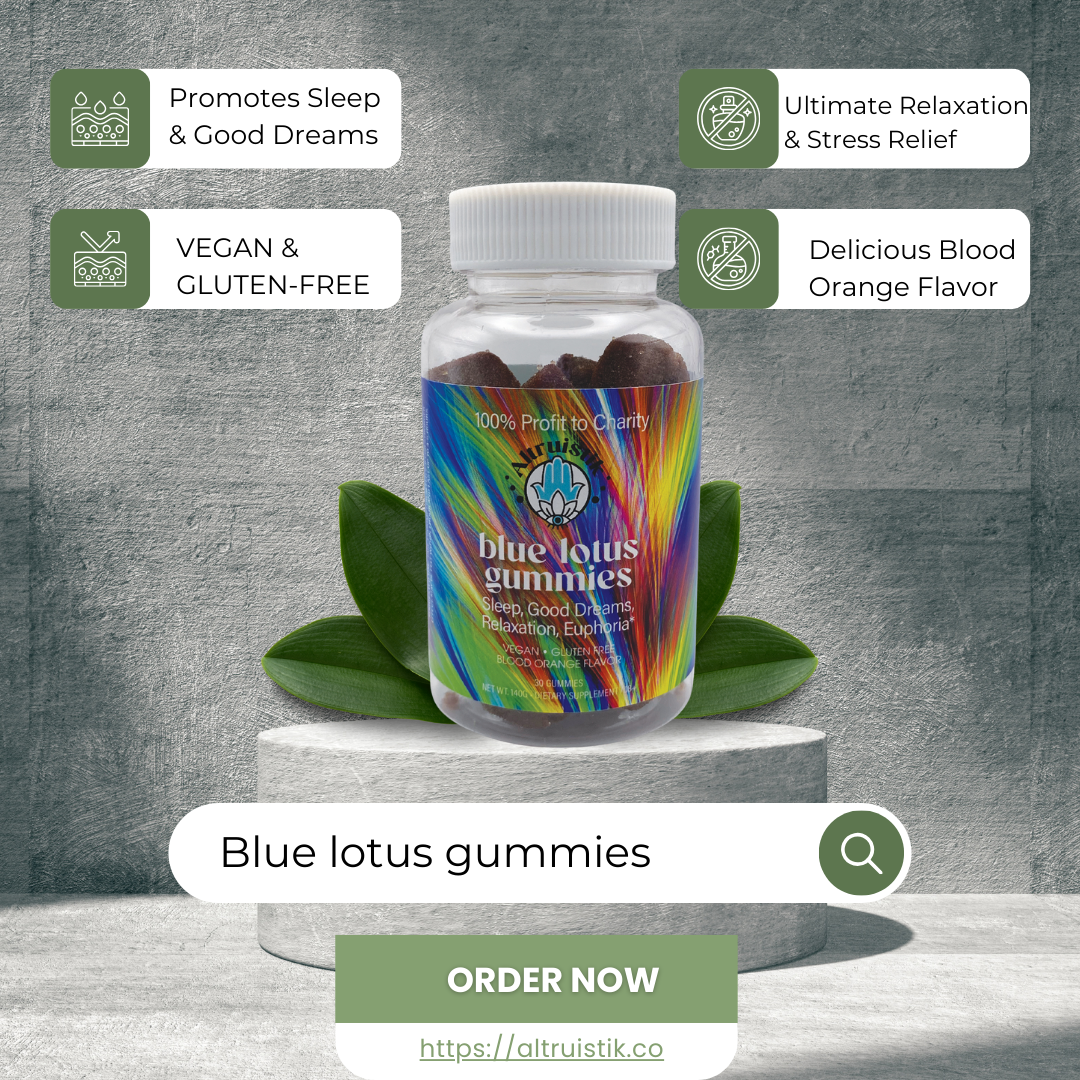Blue lotus tea has been valued for centuries for its calming and mood-enhancing qualities. Originating from the Nymphaea caerulea flower, it contains natural compounds that can promote relaxation, support restful sleep, and gently elevate mood without causing intense hallucinations.
It offers a mild, soothing effect that can help reduce stress while supporting overall well-being.

Many enjoy it as a natural way to unwind at the end of the day. Its active alkaloids, such as aporphine and nuciferine, interact with the body in ways that may ease tension, encourage deeper sleep, and enhance dream clarity.
Some also appreciate its potential antioxidant properties, which may help protect cells from everyday oxidative stress.
Whether used for relaxation, subtle mood support, or as part of a calming evening ritual, blue lotus tea provides a unique herbal experience that blends traditional use with modern interest in natural wellness.
Key Takeaways
- Blue lotus tea may promote relaxation and better sleep
- It contains natural compounds that can support mood and calmness
- Potential antioxidant effects may help protect overall health
What Is Blue Lotus Tea?

Blue lotus tea is made from the dried petals of Nymphaea caerulea, a freshwater plant native to parts of Africa and Asia. It has a long history in ancient Egyptian culture, where it was valued for its calming and mildly psychoactive properties.
Today, it is consumed as an herbal tea for relaxation and mild mood enhancement.
Origins and Botanical Background
The blue lotus flower (Nymphaea caerulea) is an aquatic plant that grows in ponds, lakes, and slow-moving rivers. It is often called the Egyptian blue lotus or sacred blue lily.
It was widely cultivated along the Nile River thousands of years ago. Ancient Egyptian art and hieroglyphs often depict the flower in religious and ceremonial scenes.
The plant’s petals open in the morning and close at night, a cycle that ancient Egyptians linked to the sun god Ra. The flower contains natural compounds such as aporphine and nuciferine, which can produce mild sedative and mood-enhancing effects when consumed.
Blue Lotus vs. Blue Water Lily
The term “blue lotus” can cause confusion because it is sometimes used for different species. Nymphaea caerulea is the true Egyptian blue lotus, while “blue water lily” may refer to other species in the Nymphaea genus or unrelated plants.
Another plant, the sacred lotus (Nelumbo nucifera), is not the same species. While both contain nuciferine, their appearance, growing conditions, and effects differ.
A quick comparison:
| Feature | Nymphaea caerulea (Blue Lotus) | Nelumbo nucifera (Sacred Lotus) |
|---|---|---|
| Habitat | Freshwater ponds/lakes in Africa | Wetlands/ponds in Asia |
| Petals | Blue to violet | Pink to white |
| Effects | Mild sedative, dream-enhancing | Primarily nutritional/culinary |
Traditional and Modern Uses
In ancient Egypt, blue lotus was used in rituals, perfumes, and medicinal preparations. It often appeared in burial goods and temple offerings.
Some evidence suggests it was steeped in wine to enhance its relaxing effects. Today, it is most often prepared as an herbal tea by steeping dried petals in hot water.
Some people also use tinctures, extracts, or incense made from the flower. Modern use focuses on its calming properties, mild euphoria, and potential to promote vivid dreams.
While not classified as a controlled substance in most countries, it is banned in a few regions, including Russia and Poland.
Key Active Compounds in Blue Lotus Tea

Blue lotus tea contains several notable plant chemicals that influence its effects. These include alkaloids that interact with brain receptors and plant-based antioxidants that may help protect cells from oxidative stress.
Nuciferine and Apomorphine
Nuciferine is an aporphine alkaloid found in Nymphaea caerulea and in smaller amounts in the sacred lotus (Nelumbo nucifera). It can act on serotonin and dopamine receptors, showing partial agonist or antagonist activity depending on the receptor type.
Apomorphine is a metabolite of aporphine and is known for its dopamine receptor agonist effects, especially at D2 receptors. It is used in medicine for Parkinson’s disease and other conditions involving dopamine signaling.
In blue lotus tea, these alkaloids may contribute to mild sedation, mood changes, and altered dream states. Their concentration in tea depends on factors like plant quality, preparation method, and steeping time.
Flavonoids and Antioxidants
Blue lotus flowers contain flavonoids such as quercetin, kaempferol, and myricetin. These compounds have antioxidant properties, meaning they can help neutralize free radicals that may damage cells.
Antioxidants in the tea may support general cellular health. While these effects are not unique to blue lotus, the combination of flavonoids with the plant’s alkaloids gives the tea a distinct chemical profile.
Flavonoids also contribute to the tea’s light floral taste and aroma. They are water-soluble, so they readily infuse into hot water during brewing.
Steeping at around 80°C can help preserve more of these compounds compared to boiling temperatures.
Aporphine and Other Alkaloids
Aporphine is the base structure for several related alkaloids in blue lotus, including nuciferine. It belongs to the isoquinoline alkaloid family, which also includes plant compounds found in species like morphine-producing poppies and berberine-rich herbs.
Other alkaloids in blue lotus include nymphaeine and nupharine. These are less studied but may have mild sedative or mood-modulating properties.
The combined alkaloid profile influences the tea’s psychoactive qualities. While effects are generally mild compared to stronger psychoactive plants, the presence of multiple alkaloids means the tea can affect mood, relaxation, and dream patterns in a subtle but noticeable way.
Relaxation and Calming Effects
Blue lotus tea contains plant compounds that may help the body relax and promote a calmer mental state. Its traditional use often focuses on easing daily tension and supporting a sense of balance without strong sedative effects.
Stress Relief and Anxiety Reduction
Blue lotus tea has been used in traditional medicine to help reduce mild stress and ease feelings of unease. The flower contains antioxidants and certain alkaloids that may influence mood regulation.
Some people drink it as part of a relaxation routine, similar to chamomile or lemon balm tea. These herbs are known for their gentle calming properties and are often combined in herbal blends for stress relief.
Unlike strong pharmaceutical options, blue lotus tea is typically consumed for subtle effects. It may help quiet racing thoughts or promote a more relaxed mindset when taken in a calm environment.
Its mild flavor and aroma can also contribute to the experience, as pleasant sensory input can play a role in reducing perceived stress. Drinking it slowly and mindfully may enhance its benefits.
Calming Effects on the Nervous System
Compounds in blue lotus, such as flavonoids and certain aromatic molecules, may interact with the nervous system to promote relaxation. These natural chemicals are thought to have gentle effects on brain activity linked to tension and alertness.
Some studies on related calming herbs suggest that plant-based antioxidants can help reduce oxidative stress in nerve cells. This may support overall nervous system health over time.
The tea’s mild sedative-like qualities are less intense than stronger herbal sedatives, making it suitable for daytime use without significant drowsiness.
When paired with other soothing herbs like lemon balm, it may offer a broader range of calming effects. This combination can be useful for those seeking a gentle way to unwind without impairing focus.
Blue Lotus Tea for Sleep Support
Blue lotus tea contains plant compounds that may help the body relax and prepare for rest. Some users report benefits for falling asleep more easily, experiencing calmer nights, and enhancing meditative or dream states.
Sleep Aid and Insomnia Relief
Blue lotus (Nymphaea caerulea) has a long history of use as a calming herbal tea. Traditional medicine systems valued it for its mild sedative-like effects, which may help reduce restlessness before bed.
The flower contains alkaloids such as nuciferine, though in very small amounts in most commercial teas. These compounds may act on the nervous system to promote relaxation without strong sedation.
People who experience occasional sleeplessness or mild insomnia sometimes use blue lotus tea as part of a bedtime routine. It is often consumed 30–60 minutes before sleep, sometimes alongside other calming teas like chamomile.
Unlike pharmaceutical sleep aids, blue lotus tea is not known to cause next-day grogginess when consumed in moderate amounts. However, its effects can vary depending on preparation strength and individual sensitivity.
Improvement in Sleep Quality
Some people drink blue lotus tea not only to fall asleep but also to improve how deeply they sleep. Reports suggest it may help reduce nighttime awakenings and encourage a more restful sleep cycle.
The tea’s antioxidant and polyphenol content could contribute to these effects by supporting overall relaxation and reducing oxidative stress, which may influence sleep patterns.
Anecdotal accounts describe a feeling of calm that persists through the night. While scientific studies on blue lotus tea specifically are limited, similar herbal teas with mild sedative properties have shown potential for improving sleep quality in small trials.
Preparation methods can affect potency. Steeping dried petals in hot water for 10–15 minutes is common, but longer steeping or higher quantities of flowers may produce a stronger effect.
Lucid Dreaming and Meditation
Blue lotus tea is sometimes used by individuals seeking to enhance dream recall or explore lucid dreaming. Historical records from ancient Egypt describe its role in spiritual and ritual contexts, possibly linked to altered states of awareness.
Some modern users report more vivid dreams after drinking the tea before bed. This may be due to subtle psychoactive compounds, though these are often present in very low concentrations in authentic tea.
Beyond dreaming, the calming properties of blue lotus make it popular for evening meditation. A warm cup before a session may help quiet the mind, making it easier to focus on breathing and mental stillness.
Because effects can differ, those interested in dream or meditation enhancement may start with small amounts and adjust based on personal experience.
Mood Enhancement and Psychoactive Effects
Blue lotus tea contains natural compounds that may influence mood and mental state. Its alkaloids interact with the nervous system in ways that can promote relaxation, mild euphoria, and mental clarity without strong sedative effects.
Mood Enhancement and Emotional Balance
Many people drink blue lotus tea for its calming effect. It contains alkaloids such as nuciferine, which may help reduce mild stress and promote a sense of ease.
Some users report feeling more emotionally stable after drinking the tea. This may be due to its ability to support relaxation without causing drowsiness.
The gentle calming effect can make it easier to focus on tasks or enjoy quiet activities. Blue lotus tea is often consumed in the evening to unwind.
It may help ease mental tension after a long day, supporting a more balanced mood. While research is limited, historical use suggests it has been valued for emotional well-being for centuries.
Possible mood-related benefits:
- Reduced mild stress or restlessness
- Increased sense of calm
- More positive or balanced mood
Mild Psychoactive Effects
Blue lotus tea can produce subtle psychoactive effects due to compounds like aporphine and nuciferine. These effects are generally mild and short-lasting.
Some people describe a light, dream-like state or gentle euphoria after drinking it. This is not comparable to strong hallucinogens but may slightly alter perception and promote creative or reflective thinking.
The psychoactive effects are often more noticeable when the tea is brewed with a higher concentration of flowers. They may also be enhanced when combined with relaxation techniques, such as meditation or quiet music.
Commonly reported effects include:
- Light mental elevation
- Slightly altered sensory perception
- Enhanced sense of calm focus
Anti-Inflammatory and Analgesic Benefits
Blue lotus contains plant compounds that have been studied for their potential to reduce inflammation and ease certain types of pain. These effects are linked to its natural phytochemicals, including flavonoids, alkaloids, and phenolic acids found in the flower and leaves.
Anti-Inflammatory Properties
Research on Nymphaea caerulea shows that its extracts contain flavonoids such as kaempferol and quercetin, as well as polyphenols that may help limit inflammatory responses in the body.
In laboratory studies, related water lily species have demonstrated reduced swelling and inflammatory markers in test models. These effects are thought to come from the ability of certain compounds to inhibit enzymes and signaling pathways involved in inflammation.
The plant’s antioxidant profile also plays a role. By reducing oxidative stress, it may indirectly help control inflammation linked to cell damage.
Key bioactive groups linked to anti-inflammatory activity:
- Flavonoids (e.g., kaempferol, quercetin)
- Phenolic acids (e.g., gallic acid)
- Triterpenoids and coumarins
Analgesic Effects and Pain Relief
Some compounds in blue lotus, such as nuciferine (found in trace amounts in certain extracts), have been studied for their potential analgesic effects. These may influence pain perception by interacting with neurotransmitter systems.
Animal studies on related lotus species show reduced pain responses in models of both acute and chronic pain. The mechanism may involve modulation of dopamine and serotonin pathways, as well as mild muscle relaxation.
Traditional preparations, including teas and tinctures, have been used to ease minor aches, tension headaches, and menstrual discomfort. However, potency can vary depending on preparation method, plant part used, and extraction process.
For consistent results, authentic extracts free from synthetic additives are preferred, as commercial products sometimes contain fragrances or unrelated plant oils that do not contribute to analgesic benefits.
Antioxidant Protection and Cellular Health
Blue lotus tea contains plant compounds with antioxidant activity that can help the body manage free radicals. These compounds may support the stability of cells and tissues by limiting oxidative damage from environmental and metabolic sources.
Oxidative Stress Reduction
Oxidative stress occurs when free radicals outnumber the body’s natural antioxidants. This imbalance can damage proteins, lipids, and DNA.
Blue lotus tea provides polyphenols and flavonoids that can neutralize reactive oxygen species before they harm cells. Laboratory studies on lotus plant parts, such as stamens and leaves, show measurable antioxidant capacity in tests like DPPH and ABTS scavenging assays.
These results suggest that regular intake may help maintain a healthier redox balance in the body. By reducing oxidative stress, the antioxidants in blue lotus tea may also support normal mitochondrial function.
This can help cells produce energy more efficiently while lowering the risk of oxidative injury to cell membranes.
Support for Skin and General Wellness
Antioxidants in blue lotus tea may protect skin cells from oxidative stress caused by UV exposure and pollution. This protection can help maintain skin elasticity and reduce the visible effects of environmental damage.
Compounds such as flavonoids and phenolic acids can also support the body’s natural repair processes. They help limit lipid peroxidation, which is linked to inflammation and premature aging of tissues.
Regular consumption, as part of a balanced diet, may contribute to better overall wellness. This includes supporting cardiovascular health, maintaining healthy circulation, and helping the body manage daily exposure to oxidative challenges.
Aphrodisiac and Sexual Wellness Benefits
Blue lotus tea has a long history of use for its mild relaxing effects and its possible influence on sexual desire. Historical records and modern interest both point to its role in supporting mood, intimacy, and overall sexual wellness.
Traditional Aphrodisiac Uses
In ancient Egypt, blue lotus was associated with love, pleasure, and fertility. It often appeared in art and ceremonial scenes linked to celebration and intimacy.
Historical accounts suggest that people brewed the petals into infusions or wines during social and romantic gatherings. Its use was thought to encourage relaxation and a gentle uplift in mood, which could help foster closeness between partners.
Some traditions classified blue lotus as an aphrodisiac because it was believed to stimulate desire without causing overstimulation. Unlike stronger herbal agents, it was valued for its subtle effects that complemented social rituals rather than overpowering them.
It was also linked to spiritual practices where sexual energy was viewed as part of life balance. This connection between sensuality and well-being shaped its reputation for centuries.
Modern Views on Sexual Health
Today, blue lotus tea is sometimes explored for its potential to support sexual wellness, though scientific studies are limited. Users often report a calming sensation that may reduce stress, which can indirectly improve sexual experience.
Some herbalists note that relaxation from blue lotus may help ease performance anxiety. Lower stress levels can make it easier for individuals to connect emotionally and physically with a partner.
It is not considered a strong stimulant like some herbal aphrodisiacs. Instead, its role may be more about creating a comfortable mental state that supports intimacy.
Because evidence is mostly anecdotal, it should be viewed as a complementary option rather than a primary treatment for sexual issues. Responsible use and realistic expectations remain important.
Digestive and General Wellness
Blue lotus tea contains plant compounds that may help the body relax and support normal digestive processes. It is often consumed for its mild calming effect, which can indirectly benefit digestion and overall comfort after meals.
Some people also use it alongside other herbal teas for a balanced wellness routine.
Digestive Support
Blue lotus tea is naturally caffeine-free, which makes it gentle on the stomach. Its mild sedative properties may help reduce tension in the digestive tract, allowing for smoother digestion.
Some traditional uses involve drinking it after meals to ease mild bloating or discomfort. While research on blue lotus is limited, related herbal teas are known to support healthy gut function by promoting hydration and calmness.
Drinking it warm may also encourage slower sipping and mindful eating habits. This can support better chewing and reduce overeating, both of which are important for digestion.
For those sensitive to strong herbs, blue lotus tea offers a softer flavor and effect compared to more bitter digestive teas.
Comparisons with Other Herbal Teas
When compared to green tea, blue lotus tea has a different profile. Green tea contains caffeine and antioxidants like catechins, which can support metabolism and gut health but may cause stomach irritation in some people.
Blue lotus tea, on the other hand, is non-caffeinated and less likely to cause digestive upset. It focuses more on relaxation than stimulation.
| Tea Type | Caffeine | Main Digestive Effect | Flavor Profile |
|---|---|---|---|
| Blue Lotus Tea | None | Gentle relaxation, mild comfort | Floral, soft |
| Green Tea | Moderate | Supports metabolism, may irritate | Vegetal, earthy |
This makes blue lotus tea a suitable evening option, while green tea may be better earlier in the day.
Potential Side Effects and Safety Considerations
Blue lotus tea may cause mild physical or mental effects in some people, especially at higher amounts. Its safety profile is not fully established, and certain groups may be more sensitive to its active compounds.
Possible Side Effects
Some users report drowsiness, dizziness, or a light sedative effect after drinking blue lotus tea. These effects are more likely when consumed in large quantities or in concentrated extracts.
Mild changes in mood or perception have been noted, likely linked to alkaloids such as nuciferine and aporphine. These can influence the nervous system and may affect alertness.
Animal studies on Nymphaea lotus suggest possible sex- and dose-dependent changes in liver function markers at high doses. While these findings do not confirm harm in humans, they indicate a need for caution with frequent or heavy use.
Other reported effects include:
- Dry mouth
- Nausea
- Increased heart rate in sensitive individuals
These reactions are generally short-lived but can be uncomfortable.
Interactions and Precautions
Blue lotus tea may have additive effects with alcohol, sedatives, or other substances that slow the central nervous system. Combining them can increase drowsiness and impair coordination.
Those with liver conditions should be cautious, as high-dose animal studies showed changes in liver enzymes. Pregnant or breastfeeding individuals should avoid use due to a lack of safety data.
People taking medications for blood pressure, mental health, or sleep should consult a healthcare provider before drinking blue lotus tea. The plant’s alkaloids could alter drug effects or increase side effect risks.
Driving or operating machinery after consumption is not advised until individual reactions are known.
Frequently Asked Questions
Blue lotus tea is valued for its calming effects, traditional ceremonial use, and potential role in supporting restful sleep. It contains active compounds that may influence mood, relaxation, and dream activity.
What are the potential health benefits of drinking blue lotus tea?
Blue lotus tea may promote relaxation due to compounds like aporphine and nuciferine, which can have mild sedative effects.
It has been traditionally used to support mood balance and may help ease mild tension.
Some people also use it to encourage more vivid or lucid dreams.
Can consuming blue lotus tea aid in weight management?
There is no strong evidence that blue lotus tea directly supports weight loss.
Its calming effects may help reduce stress-related eating for some individuals.
What are the spiritual advantages associated with blue lotus tea?
Historically, ancient Egyptian culture viewed the blue lotus as a sacred plant used in rituals.
It was believed to support meditation, enhance dream clarity, and aid in spiritual reflection.
Some modern users still incorporate it into mindfulness or ceremonial practices.
Are there any side effects to be aware of when drinking blue lotus tea?
Most people tolerate blue lotus tea well in moderate amounts.
Possible side effects may include drowsiness or mild dizziness, especially when consumed in large quantities.
It is not recommended for pregnant or breastfeeding individuals, or for those taking sedatives.
How does one prepare blue lotus tea properly?
Dried blue lotus petals are typically steeped in hot water for about 5–10 minutes.
Some prefer to simmer the petals gently to extract more flavor and aroma.
The tea can be enjoyed plain or lightly sweetened.
Is there a link between blue lotus tea and enhanced relaxation or sleep?
Blue lotus tea is often used before bedtime for its mild sedative properties.
Its calming effect may help some people fall asleep more easily.
Responses can vary from person to person.

